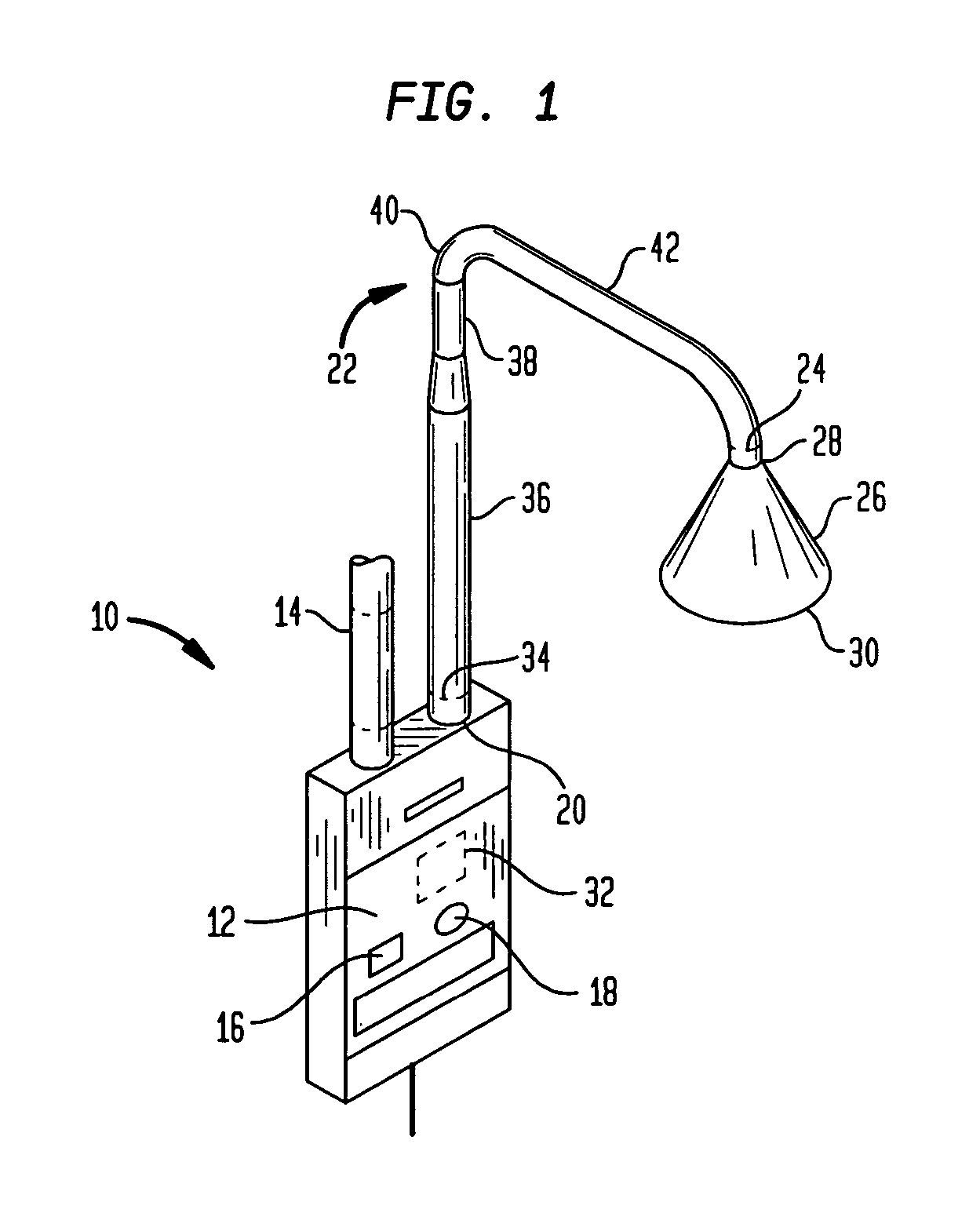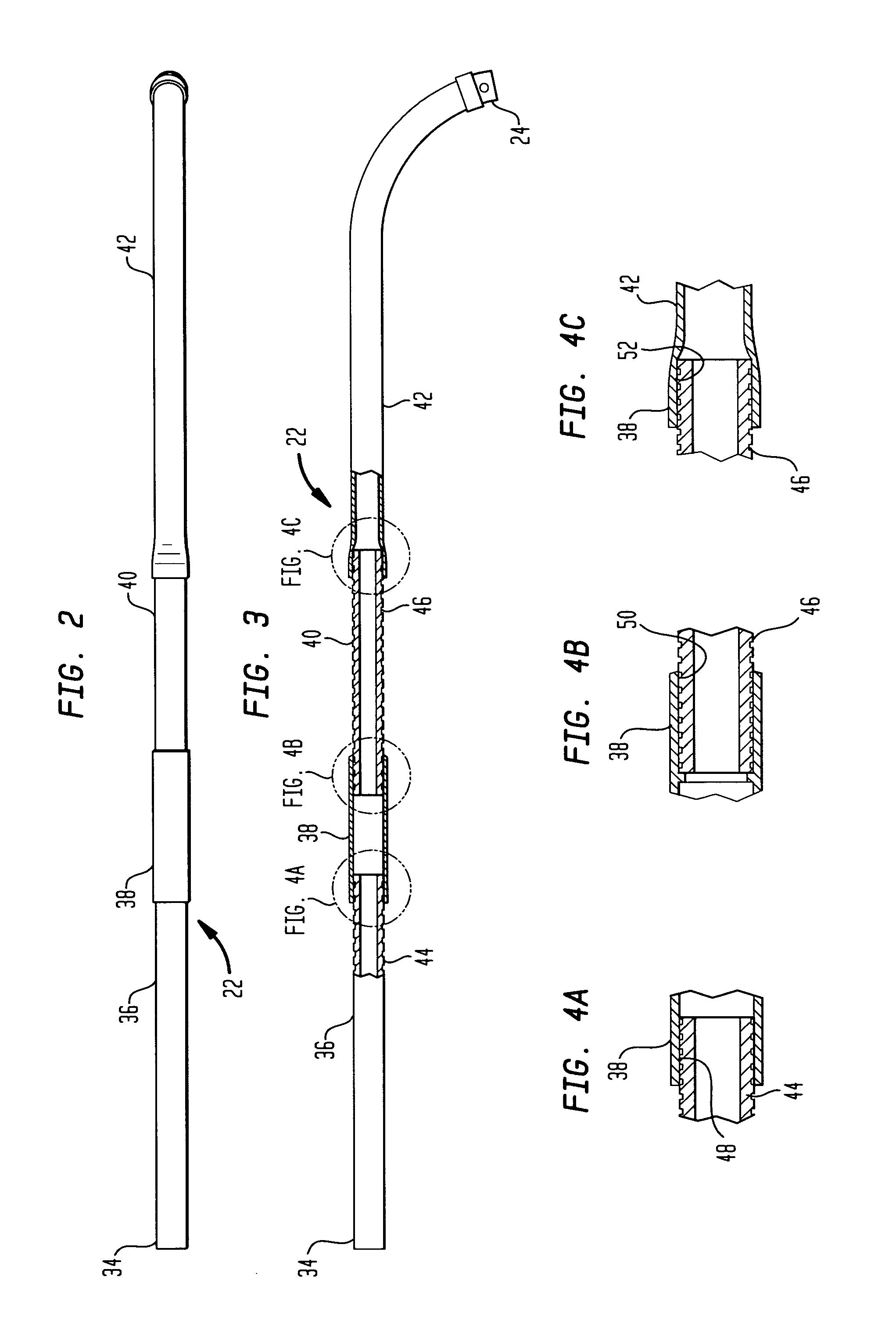Phototherapy light with dual spring support neck
a technology of supporting neck and light, which is applied in the field of infant phototherapy light, can solve the problems of harm to infants, relative high weight of suspended infants, and difficulties in using a single helical spring
- Summary
- Abstract
- Description
- Claims
- Application Information
AI Technical Summary
Benefits of technology
Problems solved by technology
Method used
Image
Examples
Embodiment Construction
[0029]Referring now to FIG. 1, there is shown a perspective view of the phototherapy light device 10 constructed in accordance with the present invention. As can be seen, the phototherapy light device 10 includes a base 12 and, in the embodiment shown, the base 12 can be mounted to a stand 14 so that the phototherapy light device 10 can be moved to a location proximate to an infant for use in administering phototherapy. As an alternative, the base 12 can be affixed to an infant care apparatus, such as an incubator or infant warmer or may be physically incorporated into an infant care apparatus.
[0030]There can be suitable controls on the base 12, including a power switch 16 and an intensity control 18 to allow the user to set a desired intensity of the phototherapy light device directed onto an infant. In the upper surface of the base 12 there is an opening 20 where an elongated neck 22 is affixed to the base 12.
[0031]The elongated neck 22 itself is manipulatable by a user such as ty...
PUM
 Login to View More
Login to View More Abstract
Description
Claims
Application Information
 Login to View More
Login to View More - R&D
- Intellectual Property
- Life Sciences
- Materials
- Tech Scout
- Unparalleled Data Quality
- Higher Quality Content
- 60% Fewer Hallucinations
Browse by: Latest US Patents, China's latest patents, Technical Efficacy Thesaurus, Application Domain, Technology Topic, Popular Technical Reports.
© 2025 PatSnap. All rights reserved.Legal|Privacy policy|Modern Slavery Act Transparency Statement|Sitemap|About US| Contact US: help@patsnap.com



